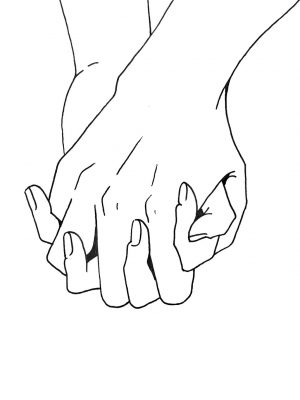Reid dates: A Study
March 2, 2017
Everyone is watching you constantly. You know it; I know it; everybody knows it. We know it from eating at Whitman dining halls. Dining halls produce a feeling of being watched in you unlike anything else on campus. This school is so small and insular that it is hard not to feel the gaze of your fellow students from time to time.

I want to know how this feeling works within public spaces on campus. I find this most clear in the example of the ‘Reid Date’ in that we all see the date unfolding while they, in turn, acknowledge the gaze of everyone else. Through the ‘Reid Date’ we can see how ‘watching’ works in spaces on campus.
The ‘Reid Date’ is a special kind of social phenomenon. We’ve all seen it and many have been on one. They are both a uniquely ‘Whitman’ and socially interesting situation that happens in our campus center. Unlike other moments of this reciprocal watching, say, in the quiet room, the Reid date shows the gaze of others in the way that you are caught up in the act of the date. You choose not to stare at others during the date because your attention is focused on your dining partner.
Reid Dates importantly differ from other romantic activities, because, of course, they happen in the Reid Café (its proper name: Café 66). Sharing meals is paramount to ‘getting to know someone’, and Café 66 offers many benefits. You have lots of time to talk, enjoy varieties of food, mitigate possible financial strain and so on. None of this matters to the problem at hand; the space itself constitutes the Reid Date, which in turn gives access to the panopticism of social life at Reid Campus Center. I use ‘panopticism’ because I’m indulgent; it comes from a thought-experiment of a prison in which the guards can see everything. A French guy talks about it, but we don’t care about that; the ‘seeing everything’ is the important part. Reid’s construction creates the feeling of being watched while also enabling others to, in fact, watch you.
Café 66 contributes appreciable ergonomic realities to the way that hearing and sight work on Reid Dates. In café 66, there are two levels of seating. Often, Reid Dates will occupy the raised stools on the wings by the windows. These are some of the only two-person tables in the café, and stand out as obvious locales for the undivided attention of a romantic engagement. From this perch high above the rest of the eating area, the two interlocutors are on display for the in-numerous patrons of Café 66; the single diners look up from their phones and laptops to observe ‘how well’ the date goes, what they laugh and talk about, how long they spend after both have finished eating.
This gaze works with sound as well, despite the many impediments in the café. Over the dull buzz of the milkshake blender and echoing order numbers, the date is observed. Its awkward laughter reverberates around the space, it hails us into watching. At this moment, a counter-watching happens in the two diners high above. They understand their precarious position in the Reid ecology; they have watched before and know they are the object of Reid’s gaze. They too have thought of the influence their location and social dynamics play in forming the date as an event.
This solidifies ideas about socially constructed identity on campus. While this panoptical language does not refer to actual problems of surveillance, (although there is a webcam above the Coffee Cart of Reid that surveys the cafeteria landscape) the sight of others in dining spaces cannot evade our attention. As a whole this gives greater insight into how social identity works on campus. The sense of observation that comes from thinking of Reid Dates in this way demonstrates the use of social spaces on campus. People sometimes come to see others, or may come to be seen.




